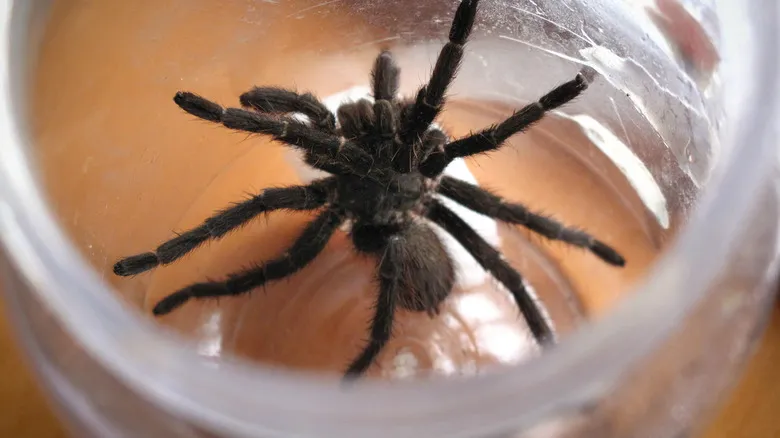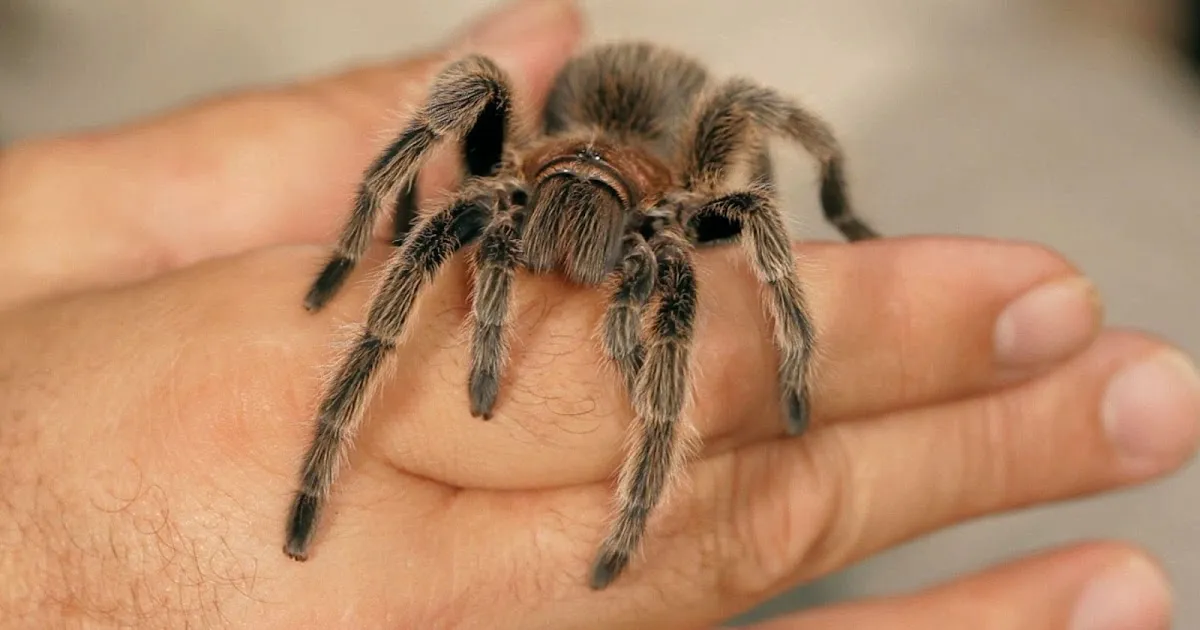Why You Need to Get Rid of Your Tarantula
Deciding to rehome your tarantula is a significant decision, and it’s essential to understand the reasons behind this choice. Owning a tarantula can be rewarding, but it also demands responsibility, commitment, and the right environment. There are several compelling reasons why a pet owner might find themselves in a position where they need to get rid of their tarantula. Addressing these reasons thoughtfully will help ensure the tarantula’s well-being and a successful transition to a new home, highlighting the importance of responsible pet ownership and the need for careful consideration before acquiring an exotic pet. This ensures the animal’s welfare and the owner’s peace of mind.
Reasons for Rehoming Your Tarantula
Several factors can contribute to the need to rehome a tarantula. These factors encompass various aspects of pet ownership, from personal health and lifestyle changes to the tarantula’s specific needs and the owner’s ability to meet them. Recognizing these reasons is the first step in making a responsible decision. Understanding these common issues allows pet owners to proactively seek solutions that ensure the tarantula’s well-being and a smooth transition to a new environment if rehoming becomes necessary. Evaluating these reasons helps owners address any issues and make informed decisions about their tarantula’s care.
Allergies and Health Concerns

One of the primary reasons for rehoming a tarantula involves health considerations. Allergies to tarantulas, although not as common as allergies to cats or dogs, can develop over time. Symptoms can range from mild skin irritation and itching to more severe respiratory issues. Additionally, certain health conditions in the owner might make it challenging to maintain a tarantula’s care. For example, individuals with compromised immune systems or those undergoing certain medical treatments might be advised to avoid contact with exotic pets like tarantulas. The presence of allergens and potential health risks means that sometimes rehoming is the safest option for the health of the owner.
Time and Commitment Issues
Tarantulas, like all pets, require a significant investment of time and resources. Their care involves regular feeding, habitat maintenance, and monitoring of their health and well-being. Changes in lifestyle, such as a new job with longer hours, increased travel, or a move to a smaller living space, can make it difficult to provide the necessary care. The commitment to a tarantula goes beyond the initial excitement of owning a pet; it demands consistent effort and attention over the tarantula’s lifespan, which can be several years. When these commitments become unsustainable, it is crucial to consider rehoming as a responsible choice to ensure the tarantula’s welfare.
Dealing with Fear and Anxiety
Some owners may develop a fear or anxiety related to their tarantula. This phobia can stem from a variety of factors, including a change in the owner’s comfort level with the pet, an unexpected event, or simply a growing sense of unease. Over time, this fear can evolve, affecting the owner’s ability to care for the tarantula properly. The constant stress and anxiety can make it challenging to handle the tarantula, clean its enclosure, or even be in the same room. In cases where fear and anxiety become overwhelming, the responsible decision is to consider rehoming the tarantula to ensure both the owner’s well-being and the pet’s ability to live without stress.
How to Prepare for Tarantula Removal

Preparing for the removal of your tarantula is a critical step to ensuring both your safety and the tarantula’s well-being. This process involves gathering the right equipment, understanding the proper handling techniques, and planning for the relocation. Failing to prepare adequately can lead to unnecessary stress for both you and the tarantula, as well as potential safety hazards. Taking the time to plan ahead and familiarize yourself with the necessary steps is essential for a successful and humane removal process, setting the stage for a smooth transition to a new environment, minimizing the risk of accidents, and providing the tarantula with the best possible care during this challenging time.
Essential Equipment and Supplies
Before starting the removal process, gather all the necessary equipment and supplies. This preparation will help you stay organized and focused, making the process safer and more efficient. This includes a suitable container for transporting the tarantula, which should be escape-proof, well-ventilated, and large enough to provide some space for the tarantula to move around. You’ll also need tools such as a long-handled brush or tongs to gently guide the tarantula, and a clear, sturdy container or deli cup for temporary holding. Preparing with the right equipment reduces the risk of accidents and allows for a more controlled and stress-free experience for both you and the tarantula. Be sure to disinfect the container to ensure safety.
Finding a Suitable Container
Choosing the right container is one of the most important aspects of safe tarantula removal. The container should be escape-proof, sturdy, and appropriately sized for the tarantula. The container should also have adequate ventilation to ensure proper airflow and minimize the risk of the tarantula overheating. Clear containers are ideal, as they allow you to monitor the tarantula during transport without having to open the container, which could lead to escape or stress. It is important to use a container that is secure, well-ventilated, and easy to clean. Choose a container that will ensure the tarantula’s safety and comfort throughout the process.
Protective Gear for Handling

Wearing appropriate protective gear is paramount when handling a tarantula. Although tarantulas are generally not aggressive, they can bite if they feel threatened. Moreover, some tarantulas have urticating hairs that can cause skin irritation. Protective gear serves as a barrier between you and the tarantula, reducing the risk of bites and preventing irritation from urticating hairs. This includes wearing long sleeves, long pants, and closed-toe shoes to protect your skin. Using disposable gloves can also enhance safety and reduce the chance of transferring any chemicals to the tarantula. Prioritizing personal safety will enable you to handle the tarantula with greater confidence and prevent any potential health issues.
Safe Removal Techniques
Safely removing a tarantula involves using specific techniques designed to minimize stress for the spider and reduce the risk of injury to you. Approaching the process calmly and deliberately is essential, since any sudden movements can scare the tarantula. Knowing how to gently encourage the tarantula into a container or carefully guide it to a new enclosure demonstrates responsible pet ownership and prioritizes the animal’s well-being. Employing these methods ensures that the process is handled with the utmost care and attention.
The Gentle Scoop Method
The gentle scoop method is a common and safe way to move a tarantula. This technique involves using a soft brush or a similar tool to gently encourage the tarantula to move into a container. Approach the tarantula calmly and slowly, and use the brush to gently nudge it towards the container. Avoid sudden movements, which can startle the tarantula and cause it to bolt. Carefully guide the tarantula into the container without touching it directly. This method is particularly useful for tarantulas that are calm and docile. It is less stressful for the spider as it minimizes direct contact, promoting a safe and controlled transfer.
The Controlled Slide Technique

The controlled slide technique is used when transferring a tarantula. This method works well when you want to move your tarantula to a temporary holding container. Carefully position the new container near the tarantula. Gently coax the tarantula to walk into the new container. You may use a brush or other long tool to gently guide the spider. This method is safe and reduces direct handling, promoting a calm transfer. It is suitable for moving a tarantula to a new enclosure or a different area within the habitat.
Tarantula Relocation Options
Once you have safely removed your tarantula, the next step is finding a suitable new home. Various options are available, each with its own set of advantages and considerations. Choosing the right path is essential for ensuring the tarantula’s continued well-being and a successful transition to a new environment. From reaching out to local reptile groups to contacting zoos, these methods provide opportunities for responsible tarantula rehoming.
Finding a New Home for Your Tarantula
The primary goal in relocating a tarantula is to find a responsible and caring new owner. Begin by considering friends, family members, or acquaintances who have experience with tarantulas or other exotic pets. Carefully assess their suitability by evaluating their experience, knowledge, and commitment to providing proper care. Discuss the tarantula’s specific needs, including its diet, habitat requirements, and any special considerations. Be sure to provide them with all relevant information and make sure they are prepared for the responsibility. If finding a new owner through personal connections proves difficult, explore alternative options.
Rehoming Through Local Reptile Groups

Local reptile groups and online forums dedicated to exotic pets are excellent resources for rehoming your tarantula. These groups often consist of experienced keepers and enthusiasts who are looking to adopt tarantulas. Post detailed information about the tarantula, including its species, age, and any special needs. Provide clear pictures and videos to attract potential adopters. Be prepared to answer questions about the tarantula and its care, and thoroughly screen potential adopters to ensure they are qualified and responsible. Meeting with potential adopters in person and visiting their homes before rehoming can help ensure that your tarantula goes to a suitable home.
Contacting Zoos and Animal Shelters
Some zoos and animal shelters accept exotic pets, including tarantulas. However, the availability of these options can vary, so it is essential to contact them beforehand. Zoos, especially those with educational exhibits on arachnids, may be interested in taking your tarantula. Animal shelters may have resources to connect you with appropriate rescue organizations or potential adopters. Contacting these institutions is a responsible way to ensure the tarantula’s safety and find a permanent home. Inquire about their specific requirements and procedures for accepting exotic pets, and provide as much information as possible about your tarantula.
How to Ensure a Smooth Transition
Ensuring a smooth transition is crucial for the tarantula’s well-being during rehoming. This involves creating a stress-free environment, providing detailed care instructions, and addressing any potential challenges that might arise. Preparing the tarantula for the move will ease the transition process. These steps will help ensure the tarantula’s welfare and contribute to its successful adaptation to its new environment. A smooth transition minimizes stress and maximizes the chances of the tarantula thriving in its new home.
Creating a Stress-Free Environment

Minimize stress by providing a calm and secure environment for the tarantula. During transport, keep the container in a dark, quiet space. Avoid sudden movements, loud noises, or excessive handling, which can cause anxiety. Once the tarantula is relocated, place its container in a quiet area of the new home. Provide a familiar setup, if possible, by including the same substrate, hides, and water dish as in its previous enclosure. Ensure that the new enclosure meets all the tarantula’s requirements, including proper temperature, humidity, and ventilation. A consistent, comfortable environment can help the tarantula adjust more quickly and reduce stress.
Providing Proper Care Instructions
Detailed and accurate care instructions are essential for the new owner. Provide a comprehensive guide detailing the tarantula’s specific needs, including diet, feeding schedule, and enclosure setup. Include information on the ideal temperature and humidity levels, and the appropriate type of substrate to use. Explain how to maintain the enclosure, including regular cleaning and water changes. Inform the new owner about any special considerations, such as the tarantula’s molting cycle or any specific behaviors. Share the tarantula’s health history, including any known issues or previous treatments. Providing detailed instructions and answering any questions can help the new owner provide optimal care, which will help in the tarantula’s welfare.
Potential Challenges and Solutions
Be prepared for potential challenges during the transition and have solutions ready. The tarantula may exhibit changes in behavior, such as refusing to eat or hiding more than usual. Stress can sometimes affect the tarantula’s appetite and activity level. If the tarantula is not eating, review its environment to ensure it is appropriate. Provide the new owner with resources for addressing common issues. Regular communication and support can help the new owner address any concerns. Prepare for possible issues, and maintain open communication to help ensure a successful transition and promote the tarantula’s well-being in its new environment.
